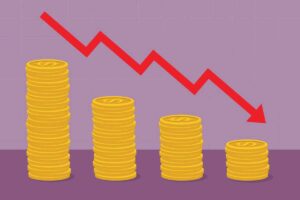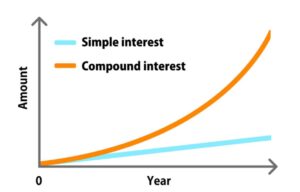Recurrent expenditure: Meaning, how it works and more

Recurrent expenditure is a term used to describe ongoing expenses that must be regularly paid to maintain the daily operations of an organization. This type of expenditure is different from capital expenditures, which are investments in long-term assets such as buildings or equipment.
In this article, we will explore the meaning of recurrent expenditure, how it works, and its importance in financial management.
What is recurrent expenditure?
Recurrent expenditure refers to the ongoing expenses that a business or organization incurs regularly to support its day-to-day operations. These expenditures are typically recurring and are incurred at regular intervals, such as daily, weekly, monthly, or annually. They are necessary for the smooth functioning of a business and include items such as rent, utilities, wages, salaries, insurance, office supplies, and other day-to-day expenses.
How recurrent expenditure works
The nature of recurrent expenditure makes it different from capital expenditure, which is an investment in long-term assets such as buildings, land, and equipment that can be used for many years. Capital expenditure is typically a one-time expense, whereas recurrent expenditure is an ongoing expense that must be paid regularly.
In financial management, it is important to distinguish between recurrent and capital expenditure, as they have different implications for the organization’s budget and financial planning. Mismanagement of recurrent expenditures can lead to cash flow problems and financial instability, while careful management can lead to financial sustainability and success.
Understanding the nature of recurrent expenditure is essential for financial planning and budgeting. It is important to accurately estimate these expenses to avoid underestimating or overestimating them, as this can lead to problems such as cash flow shortages or surplus. Effective management of recurrent expenditures requires accurate record-keeping, forecasting, and monitoring of expenses to ensure that they remain within budget.
The importance of managing recurrent expenditure in financial planning
Effective management of recurrent expenditures is crucial in financial planning, as it can impact an organization’s overall financial health and sustainability. Failure to manage recurrent expenditures effectively can lead to a variety of problems, including cash flow shortages, excessive debt, and even insolvency. Conversely, careful management of recurrent expenditures can improve an organization’s financial stability and profitability.
To manage recurrent expenditures effectively, it is essential to create and adhere to a well-planned budget. This involves accurately estimating expenses and allocating funds accordingly, monitoring expenses regularly to ensure they remain within budget and adjusting the budget as necessary to reflect changes in the business environment or priorities.
Effective management of recurrent expenditures also involves identifying areas where cost savings can be made. For example, a business may be able to negotiate better rates with suppliers or reduce the use of certain resources to lower expenses. It is also important to prioritize expenses and allocate resources accordingly, focusing on critical activities that are necessary for the success of the organization.
Another important aspect of managing recurrent expenditures is maintaining accurate and up-to-date financial records. This allows organizations to track expenses, identify areas where overspending is occurring, and make adjustments as necessary. It is also essential to monitor and control spending throughout the year to ensure that expenses remain within budget and that any potential issues are identified and addressed early.
How to differentiate between recurrent expenditure and capital expenditure
Differentiating between recurrent expenditure and capital expenditure is essential in financial management, as it helps organizations to allocate resources more effectively and accurately plan their budgets. Capital expenditure is an investment in long-term assets that will provide benefits over several years. In contrast, recurrent expenditure is an ongoing expense that is necessary to support the daily operations of a business.
The main difference between these two types of expenditures is their nature and their impact on an organization’s financial statements. Capital expenditure typically involves large sums of money and is recorded as an asset on the balance sheet, while recurrent expenditure is recorded as an expense on the income statement. Capital expenditures also have a longer-term impact on the organization’s financial health, while recurrent expenditures have a more immediate impact.
To differentiate between these two types of expenditures, it is important to consider factors such as the amount of money involved, the expected lifespan of the asset, and the impact on the organization’s operations. For example, buying a new piece of equipment that will last for several years and improve productivity would typically be considered a capital expenditure, while paying rent or salaries would be classified as a recurrent expenditure.
Common misconceptions about recurrent expenditure and why they matter
There are several common misconceptions about recurrent expenditures that can lead to confusion and mismanagement of finances. One common misconception is that recurrent expenditure is not important and can be ignored in financial planning. This can lead to overspending and cash flow problems, as recurrent expenditure is a critical component of any organization’s daily operations.
Another misconception is that recurrent expenditure is always a fixed cost that cannot be reduced. While some recurrent expenses, such as rent or salaries, may be difficult to reduce, there are often opportunities to reduce other recurrent expenses, such as utilities or office supplies, through negotiation or cost-saving measures.
A third misconception is that recurrent expenditure is always an expense that should be minimized. While it is important to manage recurrent expenditures effectively, it is also important to invest in activities that are critical to the success of the organization. This may involve increasing recurrent expenditure in certain areas to support growth and development.
These misconceptions can lead to the mismanagement of finances, and it is important to understand the nature and importance of recurrent expenditure in financial planning. By recognizing the critical role of recurrent expenditure, identifying opportunities to reduce costs, and investing in activities that are essential to the success of the organization, organizations can improve their financial health and sustainability.
Tips for optimizing recurrent expenditure and improving financial health
Optimizing recurrent expenditure is an important part of improving financial health and sustainability. Here are some tips to help organizations effectively manage their recurrent expenditure:
- Review expenses regularly: Regular reviews of expenses can help identify areas where cost savings can be made. This can involve negotiating better rates with suppliers, finding cheaper alternatives, or reducing the use of certain resources.
- Prioritize expenses: Not all expenses are equal. Prioritizing expenses can help organizations allocate resources more effectively and focus on critical activities that are essential for success.
- Create a realistic budget: Creating a well-planned budget is essential for the effective management of recurrent expenditures. This involves accurately estimating expenses, allocating funds accordingly, and regularly monitoring expenses to ensure they remain within budget.
- Implement cost-saving measures: There are a variety of cost-saving measures that organizations can implement to reduce recurrent expenditure. This may involve reducing energy usage, implementing remote work, or using cloud-based services to reduce IT costs.
- Monitor spending throughout the year: Monitoring spending regularly throughout the year can help ensure that expenses remain within budget and that any potential issues are identified and addressed early.
By implementing these tips, organizations can effectively manage their recurrent expenditure, reduce costs, and improve their overall financial health and sustainability.
Conclusion
Managing recurrent expenditures is an essential aspect of financial planning for any organization. By understanding the nature and importance of recurrent expenditure, differentiating it from capital expenditure, dispelling common misconceptions, and optimizing spending, organizations can improve their financial health and sustainability.
Don't miss a thing. Follow us on Telegram and Follow us on WhatsApp. If you love videos then also Subscribe to our YouTube Channel. We are on Twitter as MakeMoneyDotNG.





